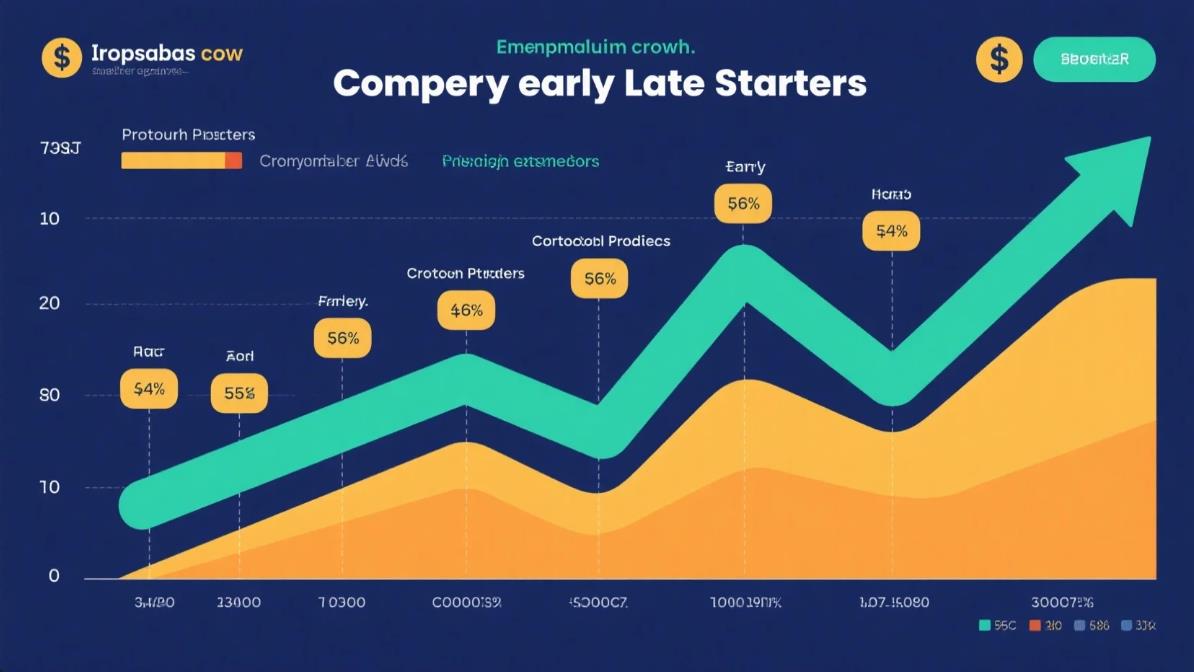Building substantial wealth before reaching 40 requires more than just saving diligently—it demands strategic financial planning, disciplined execution, and a deep understanding of investment principles. The journey to a seven-figure portfolio begins with recognizing that traditional approaches often fall short in today's dynamic economic landscape. Modern wealth accumulation combines time-tested strategies with innovative asset allocation techniques tailored to market conditions and personal risk tolerance. What separates successful young investors isn't necessarily higher income, but rather their ability to optimize compounding growth while minimizing behavioral mistakes that erode long-term returns.
The foundation of accelerated wealth building lies in the mathematical power of front-loaded investments. Starting early with even modest contributions can yield extraordinary results due to exponential growth curves. A 25-year-old investing 1,000 monthly with a 71 million by age 40, while waiting until 30 to begin would require nearly triple the monthly investment to reach the same goal. This underscores why the first critical step involves maximizing tax-advantaged accounts like Roth IRAs and 401(k)s early in one's career. The most successful young investors treat these contributions as non-negotiable expenses rather than optional savings, automating transfers to ensure consistency regardless of market fluctuations or lifestyle changes.

Asset allocation strategy separates millionaire-makers from average investors. Rather than simply diversifying across stocks and bonds, top performers construct "asymmetric return" portfolios that balance stable growth assets with calculated high-growth opportunities. This might involve allocating 70% to low-cost index funds while dedicating 15-20% to alternative investments like private equity, cryptocurrency, or income-generating real estate. The key lies in maintaining core stability while allowing satellite positions to capture disproportionate upside. Emerging research suggests that geographic diversification into developing markets with higher growth potential can further enhance returns, provided investors understand the associated risks and volatility patterns.

Behavioral finance plays an underappreciated role in wealth accumulation. Studies show that the average investor underperforms the market by 1.5-2% annually due to emotional decision-making. Successful young millionaires implement systematic rules to counteract these tendencies—setting predetermined rebalancing schedules, establishing sell disciplines, and avoiding performance-chasing behavior. Many utilize "barbell strategies" that pair ultra-conservative assets with high-growth potential investments, creating psychological comfort during market downturns while maintaining exposure to wealth-creating opportunities. The most sophisticated investors further optimize by tax-loss harvesting and strategically locating assets across different account types to minimize drag on returns.

Income acceleration represents the often-overlooked multiplier in early wealth building. Rather than relying solely on market returns, future millionaires focus on developing "skill arbitrage"—identifying undervalued capabilities they can monetize through side businesses, consulting, or digital assets. The additional cash flow not only boosts investment capital but provides flexibility to capitalize on market opportunities during downturns. Modern tools like cash-flow modeling software help balance short-term income goals with long-term investment targets, ensuring lifestyle inflation doesn't derail financial objectives.
As the portfolio grows beyond six figures, advanced strategies become increasingly important. Options trading for premium income, direct real estate syndication participation, and venture debt investing can provide non-correlated returns that smooth overall performance. The final transition involves shifting from accumulation to capital preservation strategies as the target nears, ensuring hard-won gains aren't lost to market volatility just as the goal comes into view. What begins as simple dollar-cost averaging evolves into a sophisticated wealth engine capable of generating true financial freedom—all before the typical career peak years.







